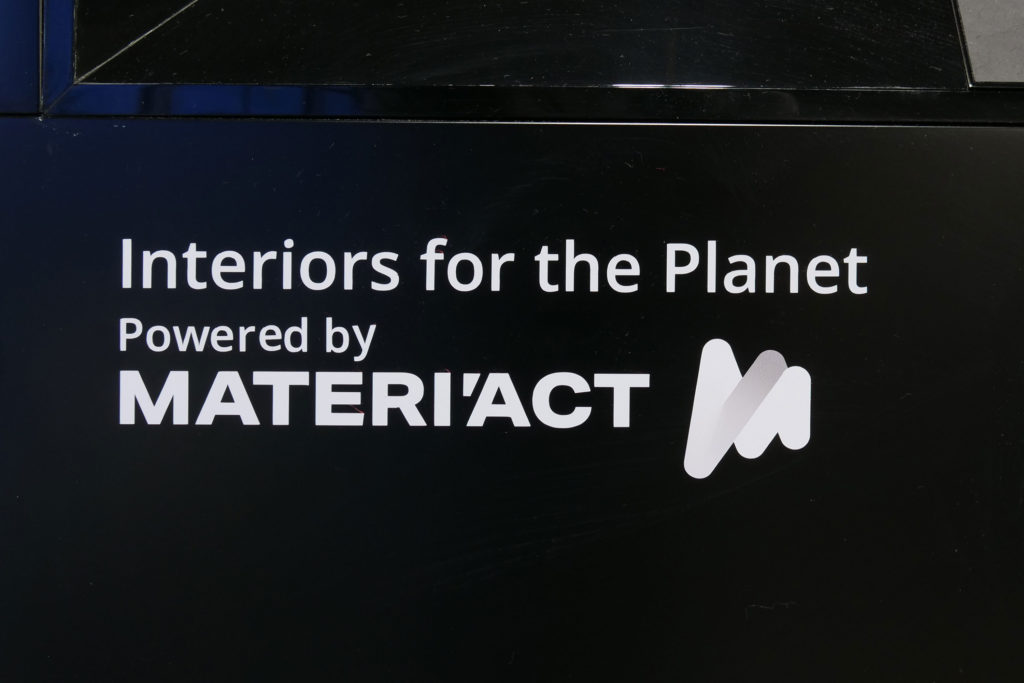Last October, automotive supplier Foriva launched Materi’act as a separate business unit to introduce new materials that are more ecologically friendly and have lower carbon footprints. The new company is actively developing fabrics, leather substitutes and structural polymers that are made of recycled plastics or contain plant-based fibers harvested from hemp or even pineapple leaves.
“Materi’act is the company that we came up with,” explained Tom Everett, acquisition engineer at Forvia. “[We] wanted it to be a separate entity because we believe that at some point this is going to really take hold, and we want to be able to supply to medical, consumer, automotive, whoever.” Everett said going this route allows Materi’act to sell its eco-friendly products to, say, Ford for use in a vehicle program, even if another supplier is building the interior.
SEE ALSO: Production Ram 1500 REV to appear in Super Bowl commercial, ship Q4 2024
Materi’act is actively developing many new materials, but it currently has a diverse range of product offerings, some of which have been available for years. The NAFI family of materials, for instance, has been out in the market for more than a decade, used in “19 programs, 7 million cars, we’re saying, that have NAFI already in them” noted Everett. These materials contain about 20% hemp fibers, which serve as a filler, and the remaining 80% or so is polypropylene plastic. This blend helps reduce weight by up to 25% compared to standard plastics.
The NFPP Flax product is a more sustainable alternative for use in ultra-lightweight interior components. Containing some 50% renewable materials, it can reduce weight by up to 50%, with large reductions in CO2 as well.

Plant-based materials can provide huge benefits, though they do have some downsides. “When we’re speaking natural fillers, the difficulty is UV sensitivity, mostly when working on light colors,” said Thomas Bianco, innovation engineer for interiors at Forvia. Additionally, “Once you get over your 20% of fillers, you’re starting to create micro-pores in your material, so it’s going to make it more brittle and reduce its durability.” Naturally, there’s a time and place for everything. A super lightweight, plant fiber-reinforced plastic might fade and crack in short order if it’s used on top of a dashboard, but this might be the perfect material to line the bottom of a door pocket or inside a center console where UV exposure is minimal.
Aside from hemp and flax, there’s another possible source of natural fibers. Pinayarn is Materi’act’s sustainable material made from pineapple leaves. “Historically, they’ve been cut down and thrown [away] and burned,” said Bianco. “So, instead of letting all that CO2 go into the environment, we’re actually collecting the leaves, having them turned into fibers and then we can create the mat and the do the PVC and PU coating.” Those pineapple leaf fibers are used in the material’s backing where they provide structure and strength. Materi’act says this material is 25% lighter than traditional animal-based leather and has 98% lower CO2 emissions, massive reductions in both areas.
One more eco-friendly Materi’act product is called Ecorium. Another alternative to leather, it contains recycled PET plastic reinforced by hemp fibers. This blend cuts CO2 emissions by a whopping 90% compared to the animal-based alternative.

Beyond all this, Materi’act is finding other ways to cut carbon. “In plastic, normally you have about 20% talc filler. So, instead of going and mining for talc, we’re finding two other ways to get the CO2,” said Bianco. They’ve figured out how to harvest it by capturing gasses produced during industrial processes or collecting it from biochar.
These new materials may be far more ecologically friendly, but don’t assume they’re cheap looking or flimsy feeling. Whether it’s the leather substitutes or harder plastics, they feel nice, look good and are likely able to withstand the test of time.
CHECK THIS OUT: 2022 BMW iX xDrive50 review: The future is now
On the surface, eco-friendly plastics or leather alternative don’t sound like they’d make much of a difference in overall emissions, but Everett said, “[Materials] make up, what, 60% of your overall CO2 in the car? So, it’s a huge percentage.” Anything that can be done to cut carbon can make a massive difference.
“And with all OEMs having their own CO2 goals, if nobody offers them a material to get there, there’s no way they’re going to be able to do it,” said Bianco. “So, we’re really pushing on being the fastest.”

